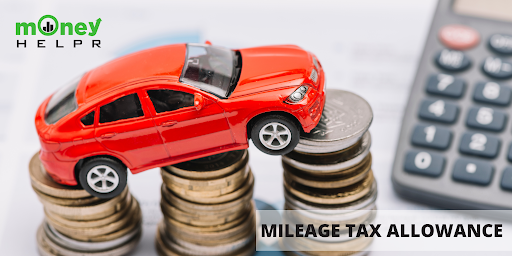Mileage Reimbursement Taxable
The UK government is considering introducing a mileage tax allowance, which would see drivers taxed based on the number of miles they drive each year. The proposal is one of a number of options being considered by the government as it looks to reduce emissions from road transport. If introduced, the tax would be paid by drivers when they renew their car insurance.
The government is also considering other measures to encourage motorists to switch to cleaner vehicles, such as electric cars.
How Can You Go Before You Need to Start Claiming Mileage?
As a general rule, firms reimburse their employees for business-related driving done in their own cars at rates set by the government. The mileage reimbursement aids in defraying part of the expenses incurred by the employee in connection with the car.
You should know that you cannot claim both a mileage allowance and a mileage tax deduction for the same trip (deduction for transport between home and work). If your commute is further than 12 kilometers, you may be eligible for mileage tax relief in the form of a tax deduction. To learn more, click here (link to mileage tax relief).
Allowance for traveling to and from work; sometimes known as travel allowance, transportation miles, petrol money, etc. Similarly you can find out NHS uniform tax rebates details as well.
Your Mileage Must Be Tracked
- Employee mileage records may be audited by the Danish Customs and Tax Administration (SKAT). The burden of ensuring that all conditions are met rests on the employer. These conditions must be met:
- The reason for the trip, or the activity that the miles are being recorded for.
- The final destination together with any intermediate stops, the beginning and ending locations for the mileage, and the total distance to be traveled.
- You need to get the date on record.
- The computation relies on the actual number of kilometers driven, so be sure to provide it.
- Rate-based computations are presented further on in this piece.
- In order to be eligible for mileage reimbursement, all driving must be done in the employee’s personal car. If you and your partner split the bills, both of your cars come under this definition.
However, the government has restricted mileage deductions in recent years, making it more difficult to minimize your tax liability by claiming them. In 2021, self-employed individuals can typically deduct $0.56 for every mile driven. In a few additional situations, such as if you are a member of the military forces reserves, a qualified performer, or if you are making a medical or humanitarian trip, you may be eligible for a mileage tax deduction.
Defining the mechanics of a mileage deduction can be complex. This article will explain who is eligible to deduct mileage expenses from their taxes, how to do so, and what else you need to know.
There are two ways to deduct business-related car expenses from your taxable income, and one of them is to claim mileage. The alternative is the “real automotive expense” option, which allows you to deduct expenses like insurance and maintenance.
Who Qualifies for A Mileage Tax Deduction?
Before the Tax Cuts and Jobs Act (TCJA) of 2017, workers could write off unreimbursed travel and other out-of-pocket costs on their taxes. However, most workers can no longer deduct mileage and other unreimbursed expenditures because the TCJA stopped the deduction for employee business expenses.
To the following people may you still deduct business mileage:
- Owners of relatively modest enterprises. Individuals who are self-employed and use either Schedule C or Schedule F on their tax returns.
- Freelancers and those in similar occupations. Drivers for ridesharing services are just one example of independent contractors.
- There are specific categories of workers. To be more specific, those who work in the arts, in the military, or in government for compensation may be able to receive mileage reimbursements.
- Individuals making trips for humanitarian purposes or medical treatments.
- To deduct a car’s mileage on a tax return
For tax purposes, you can deduct your mileage in a number of different ways. So, you won’t submit your mileage expenses the same way you would for a business if you’re using them for personal reasons like medical or charity. You can deduct a different amount for every mile driven depending on the form you pick.
How to Calculate Mileage Allowance?
If you’re an employee or self-employed and use your own car for business travel, you can claim a mileage allowance to cover the cost of your fuel and wear and tear. Here’s how to calculate the mileage allowance.
The first step is to work out the number of business miles you’ve travelled. This is the total number of miles you’ve driven for business purposes, including any travel between different sites or offices.
Next, you need to calculate your fuel costs. You can do this by using a fuel calculator or simply multiplying the number of litres of fuel used by the current price per litre.
Finally, you need to add up the cost of wear and tear on your car. This includes things like tyres, servicing and repairs.
Mileage Allowance Relief
The government allows employees to claim a mileage allowance tax relief of 45p per mile for the first 10,000 business miles driven in their own car or van. This can be a significant saving for those who use their own vehicle for work purposes.
To qualify for the relief, you must keep records of your business mileage and the reasons for your journeys. You can either use a specialised mileage log book or app, or simply keep a note of your journey details in a notebook. Be sure to include the date, start and end points, and total miles travelled.
If you’re claiming the allowance for more than one car or van, you must keep separate records for each vehicle. Once you’ve totalled up your business miles for the year, you can then calculate your allowance claim.
Guidelines for Claiming Business-Related Miles Driven On Tax Returns
Individuals who are self-employed will use Schedule C to document business travel expenses. You’ll need to answer several questions concerning the car, such as when it was first used for business purposes, in addition to supplying the total amount of kilometers driven during the tax year.
According to the table above, the 2021 mileage reimbursement rate for business owners and other independent contractors is $0.56 per mile. It’s normal to be confused about what qualifies as business mileage. The question “Can I deduct mileage to and from work?” is one of the most frequently asked. In this case, the answer is no; rather, you would tally up your journeys only after you’d already arrived at your place of employment or primary business location.

It is not tax deductible for business owners to travel from their residences to their primary place of business. All business-related driving expenses, including those to and from client meetings and other offsite sites, as well as the return trip to headquarters, are fully deductible.
This means that Uber and Lyft drivers cannot deduct the cost of leaving their homes to pick up their first customer or return home after their last drop-off. Tax deductions for driving can only be made for the distance driven between the first business stop and any additional stops made in the same day. If your house serves as your primary place of business, any time spent away from the office conducting company business is entirely tax deductible.
Conclusion
Mileage tax allowance in the UK is a great way to save money on your taxes. It is a simple and easy way to claim your expenses, and it can save you a lot of money.
